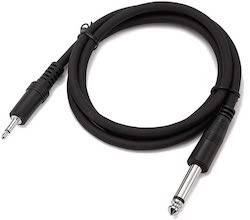We get a lot of questions about how to “Key-Map” our AIFF and WAV files so we thought we would fill you in at the “Midi Tips” section.
Two of the most popular formats in which most sound companies (including us) save their digital samples is the “AIFF and WAV” formats. AIFF (.aif, .aiff) stands for “Audio Interchange File Format” and was developed by Apple for storage of sounds on the Mac. Windows WAVE: (.wav) format was created by Microsoft and IBM, and it has become a popular standard in saving sounds on the PC. WAV sounds will also work on the Mac, but AIFF will not work with windows PC’s.
Almost all of todays music digital hardware and software samplers can read AIFF and WAV files, but before you can actually make music with them you need to know a few simple things.
AIFF and WAV files are individual samples that must first be set up as “programs” before you can create songs with them. In other words, each AIFF or WAV sample is a different musical note. The samples must be “key mapped” across the keyboard so you will be able to play all 12 notes in a typical octave or all 88 notes over the entire keyboard. Each sampler does this a little differently so we won’t get into the exact steps on how it’s done, but here are a few general tips that should help get you started.
For most instruments we usually sample in “Root” and “5th” of the scale and give you several C’s and G’s to work with. We then sample the same notes across several differnt octaves (C1,G1,C2,G2 and so on). We usually sample five octaves which then fill’s in a typical 61 note keyboard. In most cases that is all that’s needed. If we sampled every single note then the file sizes would be so large that they would not be able to fit in many samplers. Even with todays software samplers which have tons of sampling RAM, it would be a great waste of space and take longer to download if we sampled ever single note. Instruments like an acoustic piano require you sample more notes, but in most cases just sampling the Root and 5th’s are enough to create a realistic sound for instruments such as basses, leads, pads and strings.
Key Mapping also allows you to set up your own custom drum kits where you can (let’s say) put your Kick drum on C, snare on D, hi hat on E and crash cymbal on F. You could also put that kick drum on the C and stretch out the sample using key mapping to have it play across a complete octave (12 notes) by itself. Each note then becomes a different pitched kick drum and if you do that and play two or three notes at the same time you get a super phat kick! You can also key-map two or three different kick drums on that one C to create a fatter kick drum. It all depends on how you want to set up your drum sounds.
To key-map the C and G sounds into your sampler follow these steps:
1. Take the C’s and the G’s and match them to the notes on your keyboard. Start with C1 and map out all the C’s across the range of the keyboard.
You may have to tune the notes up one octave depending if your using a 88 note or a 61 note keyboard.
2. With all the C’s keymap (stretch) the low note down to Bb and the high note up to E. Each sampler does this a bit differently so check your owners manuel on how this is done on yours.
3. With all the G’s keymap the low note down to F and the high note up to A.
That will fill in all the notes over your keyboard and enable you to play songs. If you had a “E” in the mix then you would not have to stretch the C’s and G’s as far. The more notes provided, the less stretching you need to do to fill in the whole keyboard.
In general AIFF and WAV files need to be tweaked in order to get the right sound. The files are just the starting point and it’s really up to you do get the programming together to make a “patch”. Adjustments in the envelopes “release section” and filters “cutoff switch” are sure to pop up in most files (just to name a couple). You should also add effects and modulation to complement the sound of the wavs.
AIFF and WAV files take a bit of programming in order to get the sound the way you want it. We give you a great starting point in being able to create a great “patch” and with a little practice your can do the rest. If you need any additional tips to help you along please contact us and we will be glad to assist.
Now that you know all about key-mapping check out our “downloadable AIFF and WAV files” Over Here. Order online and Download Sounds today!



Recent Comments